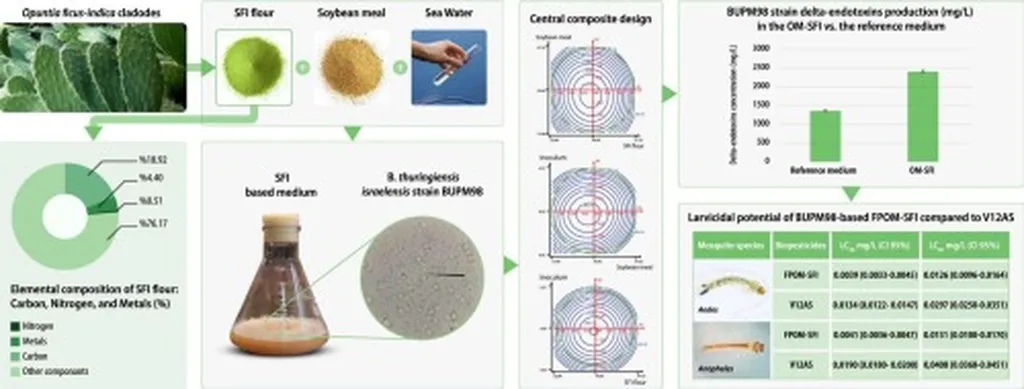In the quest for sustainable agriculture, biopesticides are stepping into the spotlight, offering a promising alternative to chemical pesticides that have long dominated the market. A recent review published in *Frontiers in Sustainable Food Systems* sheds light on the feasibility of cost-effective biopesticide strategies, potentially reshaping the agricultural landscape for smallholder farmers and large-scale operations alike.
The study, led by Emmanuel O. Fenibo of the National Agency for Food and Drug Administration in Abuja, Nigeria, explores the critical role of biopesticides in integrated pest management (IPM). These biological pest control agents are not only environmentally friendly but also align with global initiatives like the Sustainable Development Goals (SDGs) and the One Health approach. However, their widespread adoption has been hindered by technical challenges and the high costs of refined formulations.
“Cost-effective biopesticides are pivotal for advancing IPM in traditional and smallholder farming systems,” Fenibo emphasizes. The review highlights that while branded biopesticide formulations are more accessible to large-scale farms with greater economic capacity, readily available options like pesticidal plants, natural enemies, and entomopathogenic nematodes can significantly benefit smallholder farmers. These low-cost solutions can mitigate pest pressure, reduce reliance on chemical pesticides, and ultimately enhance crop yields.
The research introduces the IPY trend, a structured progression that underscores the interlinked dynamics of infestation levels, pesticide consumption, and crop productivity under cost-effective, biopesticide-driven IPM. This trend suggests that as infestation levels decrease with the use of biopesticides, so does the need for chemical pesticides, leading to improved crop yields.
One of the most compelling aspects of this study is its potential to dispel the misconception that developing nations, often reliant on traditional agricultural technologies, lack awareness of biopesticides. By examining persistent controversies and misconceptions, the review aims to facilitate informed policy decisions and optimized implementation strategies.
The commercial implications of this research are substantial. For the agriculture sector, the adoption of cost-effective biopesticides could lead to significant savings on chemical pesticides, reduced environmental impact, and improved crop yields. This shift could also open new markets for biopesticide producers, particularly those focusing on low-tech, accessible solutions for smallholder farmers.
As the agricultural industry grapples with the need for sustainable practices, this research offers a roadmap for integrating biopesticides into existing farming systems. By leveraging readily available resources and low-cost technologies, farmers can transition to more sustainable practices without compromising productivity.
The findings of this study could shape future developments in the field by encouraging further research into cost-effective biopesticide formulations and promoting policies that support their adoption. As Fenibo notes, “The utilization of readily accessible biopesticides can mitigate pest pressure, reduce reliance on chemical pesticides, and enhance crop yields.” This shift towards sustainable agriculture practices is not just a possibility but a necessity for the future of farming.

